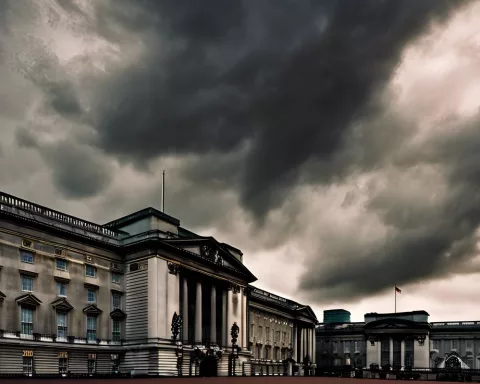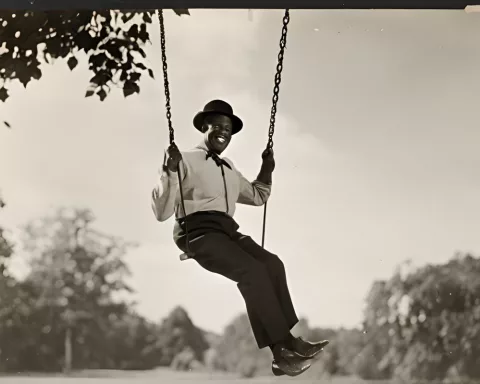The world of royal society is no longer veiled thanks to Omid Scobie’s book ‘Endgame: Inside the Royal Family and the Monarchy’s Fight for Survival’. The book reveals that Prince William single-handedly stripped Prince Andrew of his royal patronages and criticized his godmother’s racist conduct. Scobie also delves into the media strategy and fashion choices of the royals, as well as their psychology. This book offers a fresh perspective on the monarchy’s future and the complex relationships within the palace.
Unveiling Intriguing Revelations
Prince William’s decision to strip Prince Andrew of his royal patronages was a single-handed execution, according to Omid Scobie’s book ‘Endgame: Inside the Royal Family and the Monarchy’s Fight for Survival’. The book also reveals William’s criticism of his godmother’s racist conduct and his hands-on approach to managing the narrative surrounding royal scandals.
In the enigmatic realm of regal lineage, fresh revelations are making waves. These insights are elucidated in Omid Scobie’s latest work, ‘Endgame: Inside the Royal Family and the Monarchy’s Fight for Survival’. Eliminating the obscurity within the palace, Scobie portrays Buckingham Palace and Kensington Palace as frenzied “hubs of clashing intentions”, stages where each action shapes the monarchy’s future.
Unveiling Intriguing Revelations
One of the most astonishing revelations pertains to the future monarch, Prince William. The book implies that he single-handedly executed the decision to divest his scandal-plagued uncle, Prince Andrew, of his royal patronages. This challenges the storyline that the decision was collaborative, involving his father, King Charles III. As the royal family gears up to usher in a new epoch post-Queen Elizabeth II, it seems Prince William is eager to embark on his unique path, learning from the blunders of his predecessors.
The narrative further narrates episodes where William has taken control. He openly criticised his godmother’s racist conduct at a Buckingham Palace gathering, a decision that left Charles’ followers irate, branding it as rude and “out of line”.
Inside the Media Strategy and Fashion Choices
Scobie doesn’t halt at unveiling the palace’s internal dynamics; he also ventures into the media tactics utilised by the royals. Charles’ endeavors to charm influential royal correspondents during Prince Harry and Meghan Markle’s exit from senior royal roles is spotlighted. In contrast to his father, William seems to be more hands-on, taking charge of managing the narrative surrounding royal scandals.
On a personal note, the book highlights Duchess of Cambridge, Kate Middleton’s sartorial choices. It exposes that she intentionally includes tributes to the late Princess Diana in her attire. As per ‘Endgame’, Middleton seeks her husband’s advice on her wardrobe, echoing Meghan Markle’s cooperative approach during her tenure as a senior royal.
Delving into Royal Psychology
Further deepening the intrigue is the disclosure that Prince William harbors the conviction that therapy has indoctrinated his younger sibling, Prince Harry. The book suggests that William expressed apprehension about his brother being influenced by an “assembly of therapists”. This addition brings a fresh perspective of psychological currents within the family dynamics of the royal household.
The Future of Monarchy: A Game of Chess
‘Endgame’ guides readers into pondering the monarchy’s future and the complex relationships that mold this ancient institution. The chess game persists, with each strategy revealing more about the complicated dynamics within the palace’s confines. Each disclosure, each story, is a pawn shift in a more significant game, a glimpse into the workings of a royal family striving to steer through the fluctuating currents of the 21st century.
1. What does Omid Scobie’s book ‘Endgame: Inside the Royal Family and the Monarchy’s Fight for Survival’ reveal?
The book reveals new insights into the world of the royal society, including Prince William’s decision to strip Prince Andrew of his royal patronages and criticize his godmother’s racist conduct, as well as delving into the media strategy and fashion choices of the royals and their psychology.
2. Who stripped Prince Andrew of his royal patronages according to the book?
Prince William single-handedly stripped Prince Andrew of his royal patronages, which challenges the previous narrative that the decision was made collaboratively with King Charles III.
3. What does the book say about Prince William’s criticism of his godmother’s racist conduct?
The book reveals that Prince William openly criticized his godmother’s racist conduct at a Buckingham Palace gathering, a decision that left Charles’ followers irate and branding it as rude and “out of line”.
4. What media tactics are highlighted in the book?
The book reveals Charles’ endeavors to charm influential royal correspondents during Prince Harry and Meghan Markle’s exit from senior royal roles, while Prince William is shown to be more hands-on and takes charge of managing the narrative surrounding royal scandals.
5. What psychological current within the family dynamics of the royal household does the book suggest?
The book suggests that Prince William harbors the conviction that therapy has indoctrinated his younger sibling, Prince Harry, expressing apprehension about his brother being influenced by an “assembly of therapists”.
6. What does the book guide readers into pondering?
The book guides readers into pondering the monarchy’s future and the complex relationships that mold this ancient institution, portraying the palace as frenzied “hubs of clashing intentions”, where each action shapes the monarchy’s future.












